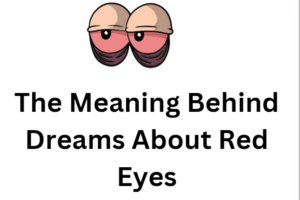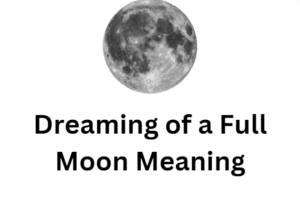The 7 Minute NASA Song Genius Wave: Where Space Meets Sound in the Digital Age

7 Minute NASA Song :In the ever-evolving landscape of internet culture and music trends, a fascinating phenomenon has emerged: the “7 Minute NASA Song Genius Wave.” This unique convergence of space exploration, musical creativity, and online community engagement has captured the imagination of millions. Let’s embark on a cosmic journey to explore this trend, its origins, impact, and what it reveals about our fascination with the universe.
Unveiling the 7 Minute NASA Song Genius Wave
At its core, the 7 Minute NASA Song Genius Wave represents a new genre of music that blends actual sounds from space, as recorded by NASA, with original compositions. These tracks, typically seven minutes in length, have gained significant traction on the music annotation platform Genius, creating a “wave” of popularity and discussion.
Key Elements of the Trend:
- Duration: Seven minutes, allowing for a comprehensive musical journey
- NASA Sounds: Incorporation of authentic space-recorded audio
- Original Composition: Creative musical elements added by artists
- Genius Platform: The primary hub for sharing, discussing, and annotating these songs
- Community Engagement: Active participation in interpreting and expanding on the music’s themes
The Cosmic Origins: NASA’s Role in the Soundscape
NASA’s Sound Library: A Treasure Trove for Musicians
NASA has been recording sounds from space for decades. From the beeps of Sputnik to the plasma waves of Jupiter, these recordings have provided a unique auditory glimpse into the cosmos. In recent years, NASA has made many of these sounds publicly available, inadvertently providing a goldmine for musicians and producers.
Notable NASA recordings include:
- The “sounds” of black holes (actually gravitational waves converted to audio)
- Solar wind interactions with Earth’s magnetosphere
- Radio emissions from Saturn’s rings
- The eerie whistles of Jupiter’s moons
From Data to Music: The Art of Sonification
Many of the sounds used in 7 Minute NASA Songs come from a process called sonification. This technique transforms complex data sets into audible sounds, allowing scientists (and now musicians) to perceive patterns and phenomena in new ways.
The Genius Platform: Catalyzing the Wave
Genius.com, originally known as Rap Genius, has played a crucial role in the proliferation of the 7 Minute NASA Song trend.
How Genius Amplifies the Trend:
- Annotation Features: Users can explain complex scientific concepts referenced in lyrics
- Embedded Players: Easy listening while reading annotations
- Community Discussions: Forums for debating interpretations and sharing knowledge
- Artist Verification: Allowing creators to provide insight into their cosmic compositions
Anatomy of a 7 Minute NASA Song
The Significance of Seven Minutes
The choice of seven minutes is not arbitrary. This duration allows for:
- A complete narrative arc, often mirroring a space mission
- Incorporation of multiple NASA sound samples
- Development of complex musical themes
- A length that’s substantial yet accessible to listeners
Typical Structure of a 7 Minute NASA Song
While each composition is unique, many follow a similar structure:
- Launch (0:00 – 1:00): Opening with mission control communications or rocket ignition sounds
- Ascent (1:00 – 2:30): Building tension, often with increasing tempo
- Orbit Achieved (2:30 – 4:00): Weightless, ambient sections using space environment sounds
- Discovery (4:00 – 5:30): Climax featuring a significant space phenomenon sound
- Return Journey (5:30 – 6:30): Gradual resolution, often with re-entry sounds
- Landing (6:30 – 7:00): Conclusion, sometimes echoing the opening
Top American Neuroscientist:”7 Minute Nasa Song”Activates Your Superbrain
The Artists Behind the Wave
The 7 Minute NASA Song Genius Wave has attracted a diverse array of artists, from established electronic musicians to amateur space enthusiasts with a flair for composition.
Notable Contributors:
- DJ Cosmos: Known for intricate layering of NASA sounds with deep house beats
- Astro-Acoustic Ensemble: A collective of classical musicians creating orchestral space epics
- Nebula Noise: An experimental electronic artist focusing on the sounds of distant galaxies
- The Pulsar Poets: A group combining spoken word poetry with NASA audio samples
The Science of Space Sounds
Understanding the science behind these cosmic sounds enhances appreciation for the 7 Minute NASA Songs.
Types of Space Sounds:
- Electromagnetic Waves: Converted to audio, these form the basis of many “space sounds”
- Plasma Waves: Oscillations in charged particle environments, common near planets
- Mechanical Vibrations: Actual sound waves, possible on planets with atmospheres
- Data Sonification: Translating visual or numerical data into sound
Cultural Impact and Artistic Expression
The 7 Minute NASA Song Genius Wave has had far-reaching effects beyond just creating a new music genre.
Impact on Music Industry:
- Renewed interest in concept albums and longer song formats
- Increased collaboration between scientists and musicians
- New sub-genres emerging, like “cosmic ambient” and “astro-hop”
Educational Outreach:
- Use in science classrooms to engage students in astronomy and physics
- Workshops teaching the basics of data sonification
- Online courses combining music production and space science
Public Engagement with Space Science:
- Increased general interest in NASA missions and discoveries
- Crowdsourced projects for interpreting space data through sound
- Virtual reality experiences combining NASA visuals with 7 Minute Songs
Creating Your Own 7 Minute NASA Song
For aspiring cosmic composers, here’s a guide to crafting your own stellar track:
- Research: Explore NASA’s sound archives and mission data
- Conceptualize: Choose a space phenomenon or mission to base your composition on
- Select Sounds: Pick NASA audio samples that fit your concept
- Compose: Blend NASA sounds with original music, respecting the typical structure
- Produce: Use digital audio workstations to refine your cosmic symphony
- Share: Upload to Genius and engage with the community
- Annotate: Provide scientific context for your musical choices
The Psychology Behind the Phenomenon
The popularity of 7 Minute NASA Songs taps into several psychological factors:
- Awe and Wonder: Connecting listeners to the vastness of the universe
- Escapism: Offering a mental journey beyond Earth’s boundaries
- Pattern Recognition: The human brain’s love for finding order in complex sounds
- Emotional Resonance: Space sounds often evoke deep, primal emotions
- Intellectual Stimulation: Combining auditory pleasure with scientific learning
Challenges and Controversies
Despite its popularity, the 7 Minute NASA Song Genius Wave faces some hurdles:
- Copyright Concerns: Questions about the use of NASA recordings in commercial music
- Scientific Accuracy: Debates over the interpretation of space data in musical form
- Oversaturation: Risk of the genre becoming repetitive or losing its novelty
- Accessibility: Ensuring the trend is inclusive for those with hearing impairments
The Future of Cosmic Compositions
As technology advances and our exploration of space continues, the 7 Minute NASA Song Genius Wave is likely to evolve.
Potential Future Developments:
- Live Performances: Concerts featuring real-time data from active space missions
- AI Composition: Machine learning algorithms creating space-inspired music
- Interactive Experiences: Apps allowing users to manipulate space sounds in real-time
- Extraterrestrial Collaborations: Incorporating sounds from future Mars or lunar missions
- Therapeutic Applications: Using space sounds and music for relaxation and mental health
Global Perspectives on Space-Inspired Music
The 7 Minute NASA Song Genius Wave, while prominently featured on English-language platforms, has inspired similar movements worldwide.
International Space Sounds:
- Roscosmos Rhythms: Russian space agency sounds in electronic music
- ESA Echoes: European Space Agency data in avant-garde compositions
- ISRO Inspirations: Indian space missions inspiring Bollywood and classical Indian music
- JAXA Jamming: Japanese space agency collaborations with J-pop artists
The Role of Social Media in Amplifying the Wave
Social media platforms have played a crucial role in the spread of the 7 Minute NASA Song phenomenon.
Platform-Specific Trends:
- TikTok Challenges: Creating short videos set to snippets of 7 Minute NASA Songs
- Instagram Reels: Visual artists pairing NASA imagery with song excerpts
- YouTube Deep Dives: Long-form content explaining the science behind the songs
- Twitter Spaces: Live discussions and listening parties for new releases
Bridging the Gap: Science Communication Through Music
The 7 Minute NASA Song Genius Wave represents a powerful new tool for science communication.
Benefits for Public Understanding:
- Emotional Connection: Music creates an emotional link to scientific concepts
- Memorability: Musical elements make space facts more memorable
- Accessibility: Complex ideas presented in a more digestible format
- Inspiration: Sparking interest in STEM fields, especially among younger audiences
Conclusion: The Universe’s Playlist
The 7 Minute NASA Song Genius Wave is more than just a musical trend; it’s a testament to humanity’s enduring fascination with the cosmos and our desire to understand our place in the universe. By transforming the silent wonders of space into audible art, these cosmic composers are creating a new language of exploration and discovery.
As we continue to push the boundaries of space exploration, the sounds of the universe will undoubtedly inspire new forms of creative expression. The 7 Minute NASA Song may evolve, taking on new forms and incorporating future discoveries, but its essence will remain the same: a harmonious blend of science, art, and human curiosity.
Whether you’re a seasoned astronomer, a music enthusiast, or simply someone who looks up at the night sky in wonder, the 7 Minute NASA Song Genius Wave offers a unique portal into the soundtrack of the cosmos. It reminds us that in the grand universal symphony, Earth’s music is but one note – beautiful, fleeting, and interconnected with the vast, unfolding composition of space and time.
As we listen to these celestial melodies, we’re not just hearing sounds from space; we’re experiencing the universe’s story told through the universal language of music. In those seven minutes, we transcend our earthly boundaries, touching the infinite and returning with a deeper appreciation of our cosmic heritage.
The 7 Minute NASA Song Genius Wave is more than a trend; it’s a movement that bridges the gap between the scientific and the artistic, the known and the unknown. It invites us all to become explorers, to open our ears to the music of the spheres, and to find our own rhythm in the cosmic dance of the universe.
Read also
Lucid Dream Meaning: Unlocking the Power of Conscious Dreams








